Cemeteries are usually associated with death, but they are actually full of life – animal life.
As cities around the world expand and the number of urban green spaces decrease, animals are crowded out of their natural habitats. They have to go somewhere, right?
And why not a cemetery? Cemeteries are usually green and quiet. They often have trees for protection. Many have ponds or fountains that can serve as water sources. Hunting is not allowed and visitors are respectful.
Animals at the Cemetery: Birds
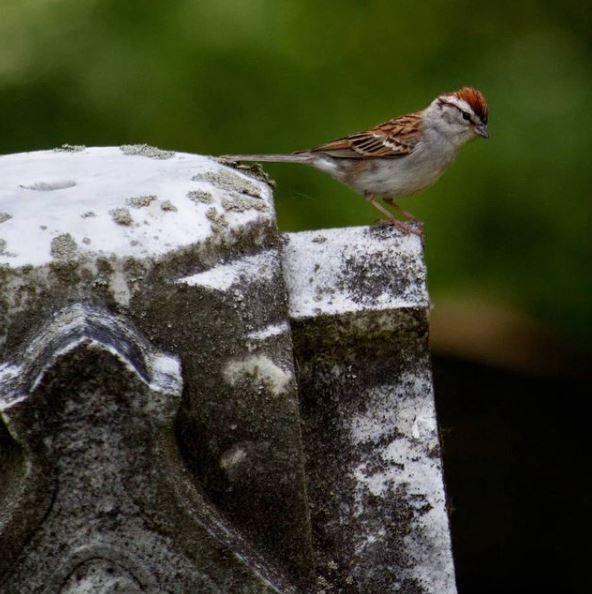
You may hear woodpeckers, mockingbirds, sparrows, and chickadees chattering away as you walk through a cemetery.
According to the Audubon Society, cemeteries can be some of the best places for bird-watching. Some cemeteries even host bird-watching tours.
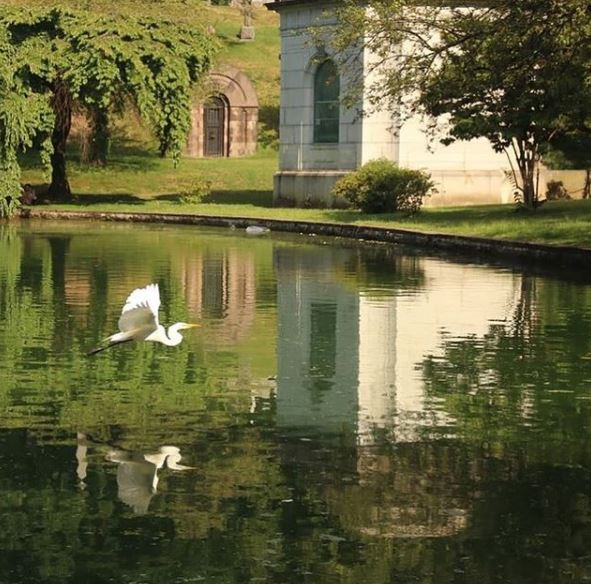
In a large metropolis, with only an airplane flying low overhead or the occasional rattle from a nearby subway station, birdsong may cause you to forget that you’re still in the city.
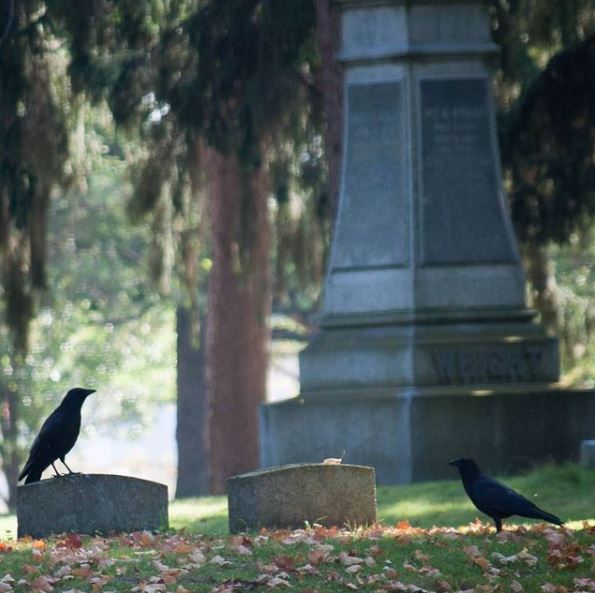
These cemetery crows look like they are ready for a movie set.
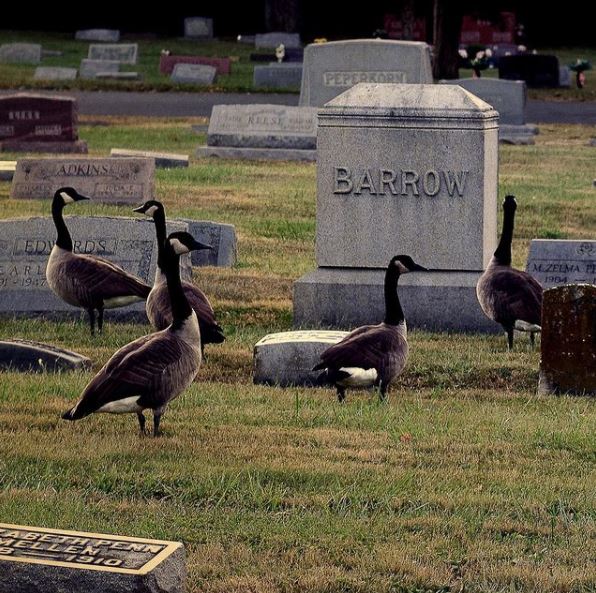
Canadian geese may congregate into flocks of up to 100 for their migrations.
Traveling in their v-formations, Candian geese can fly south for the winter at an astonishing rate of 1,500 miles in just 24 hours. But during mild winters, they may waddle around your local cemetery indefinitely!
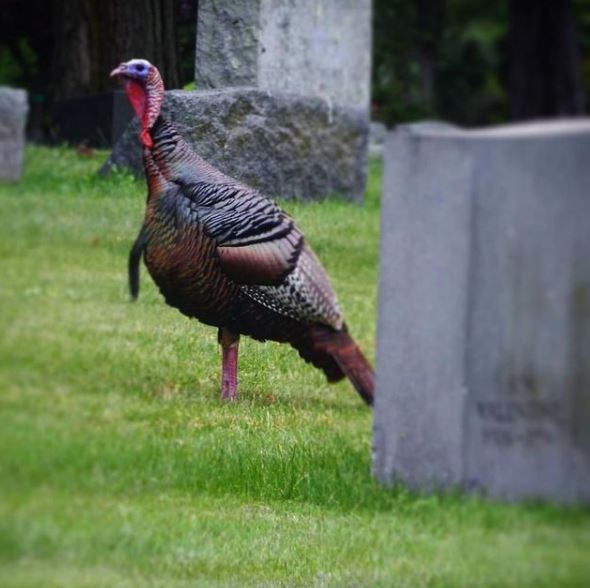
This turkey is wandering among the graves at Mountain Grove Cemetery in Bridgeport, Connecticut.
In 1849, Mountain Grove Cemetery was purposely designed to be park-like and was situated away from the center of the city. The designer was none other than P.T. Barnum, the famous circus showman, who is buried there himself.
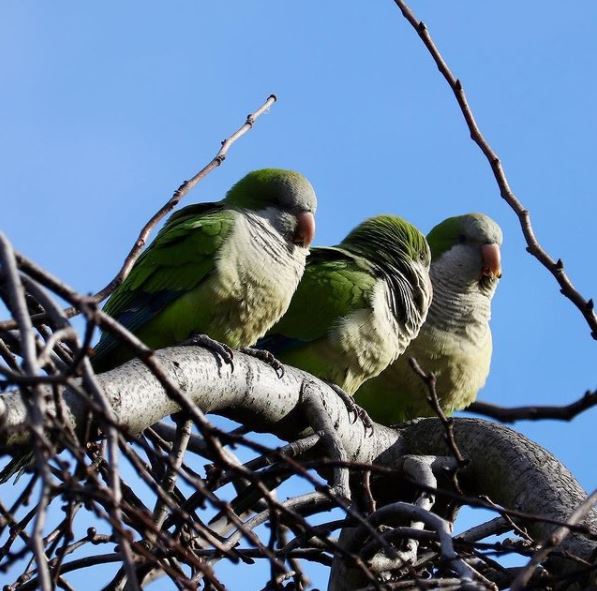
Green-Wood Cemetery in Brooklyn, New York is situated on 478 acres of hill-covered land in the heart of the city, with views of the Statue of Liberty in New York Harbor. It’s a beautiful place to visit – so nice, in fact, that some monk parakeets decided to unpack their bags and stay.
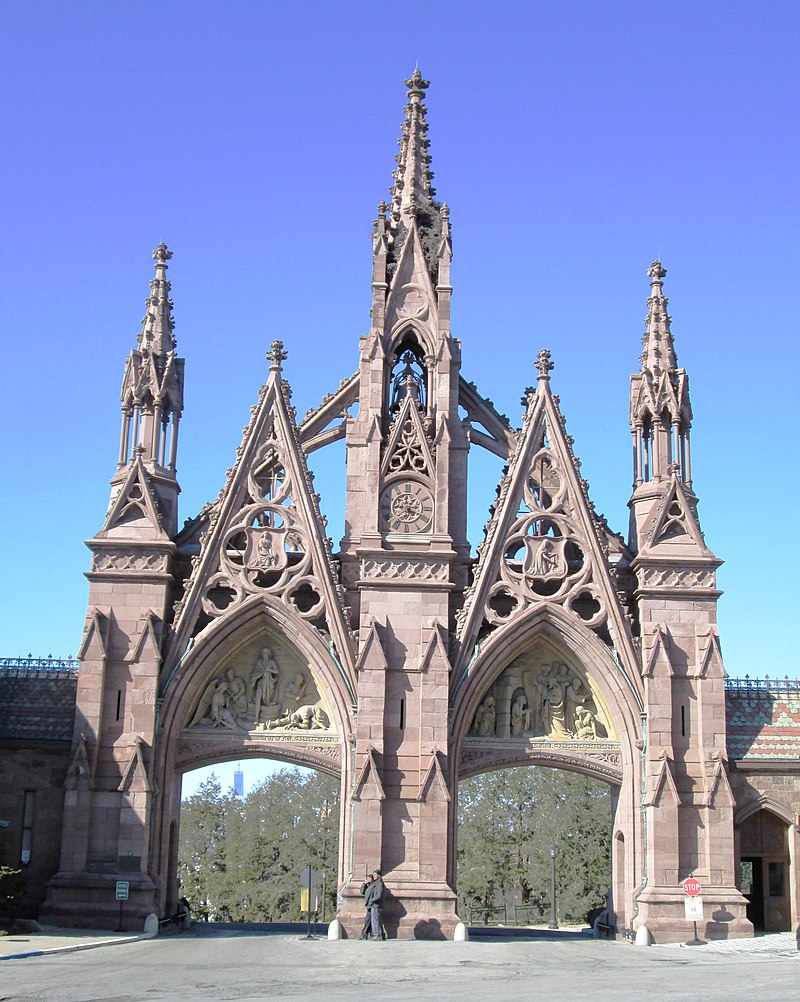
These blue-green parrots are native to the mountains of Argentina. So how did they end up in Brooklyn? According to legend, a crate of caged monk parakeets broke open at JFK Airport in the 1960s. The birds flew off in search of a peaceful place to make their new home.
They tried out the spires of the gothic gatehouse at Green-Wood Cemetery. Since the cemetery was peaceful and the winters in New York were similar to those in the Andes mountains, they stayed!
Animals at the Cemetery: Bees
Okay, let’s talk about “the birds and the bees”.
Wait a minute . . . we already talked about the birds! Now on to the bees.
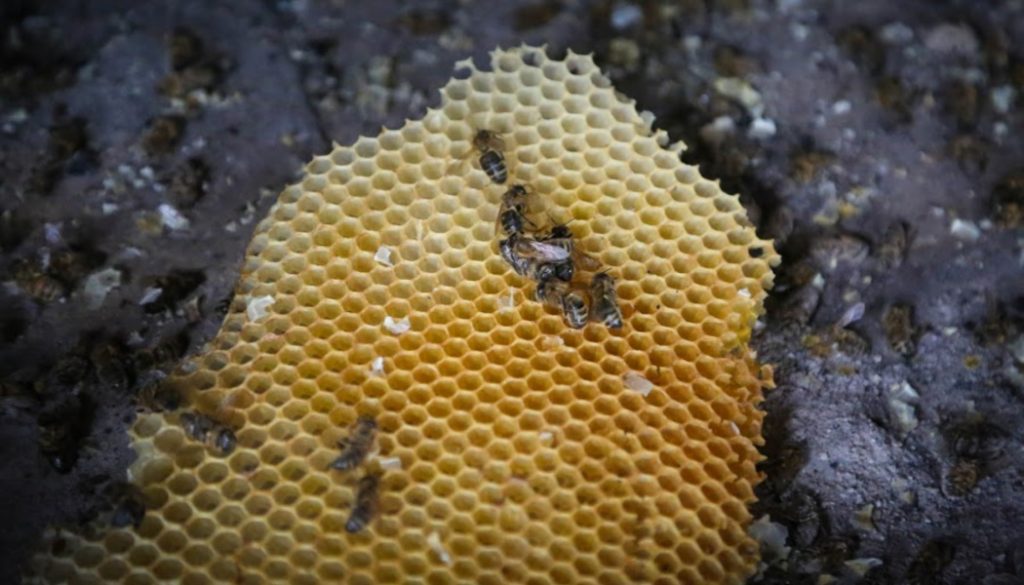
Worldwide, bee populations are in severe decline.
Bees have succumbed to pesticides, fertilizers, parasites, deforestation, and habitat destruction. But cemeteries can be a safe harbor for bees.
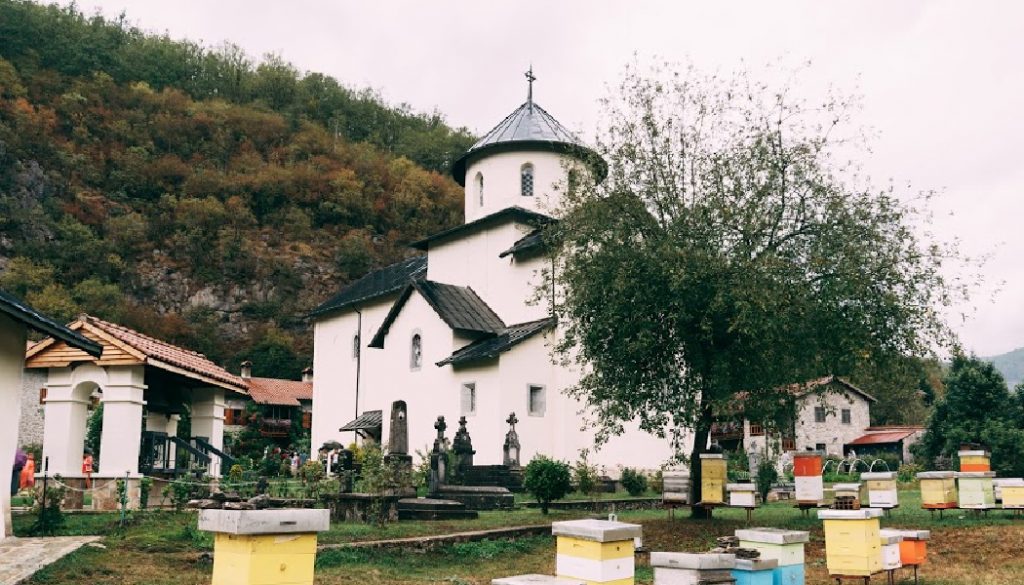
From Slovakia to New York City, beekeepers around the world are taking advantage of protected cemetery space by setting up bee boxes among the graves.
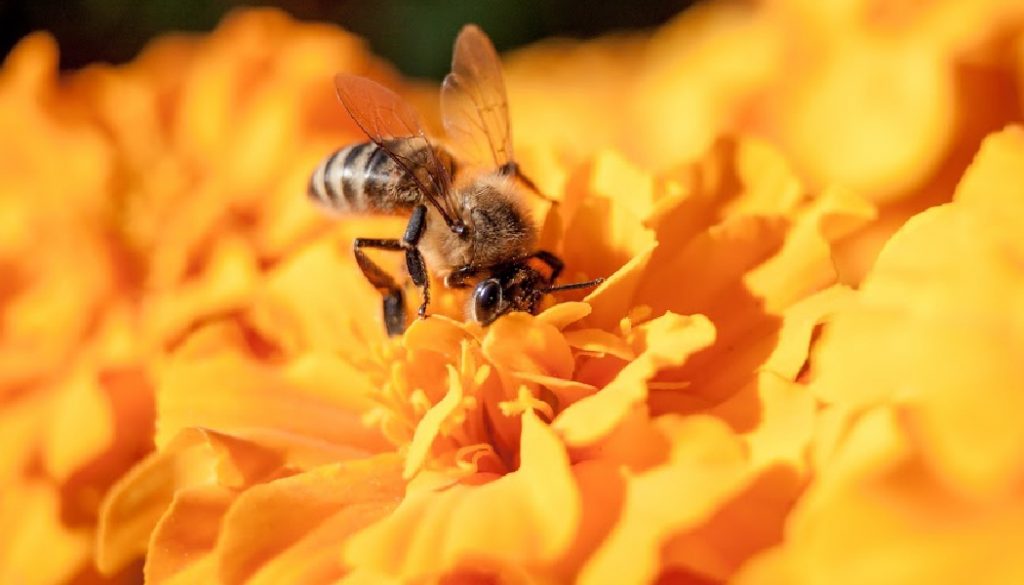
With a fresh supply of fresh flowers of all varieties being brought to the cemetery daily and hundreds of trees, what’s not to love?
With such a variety of flora to choose from, their honey may taste of tangerine, mint, clover or more, all within the same cemetery.
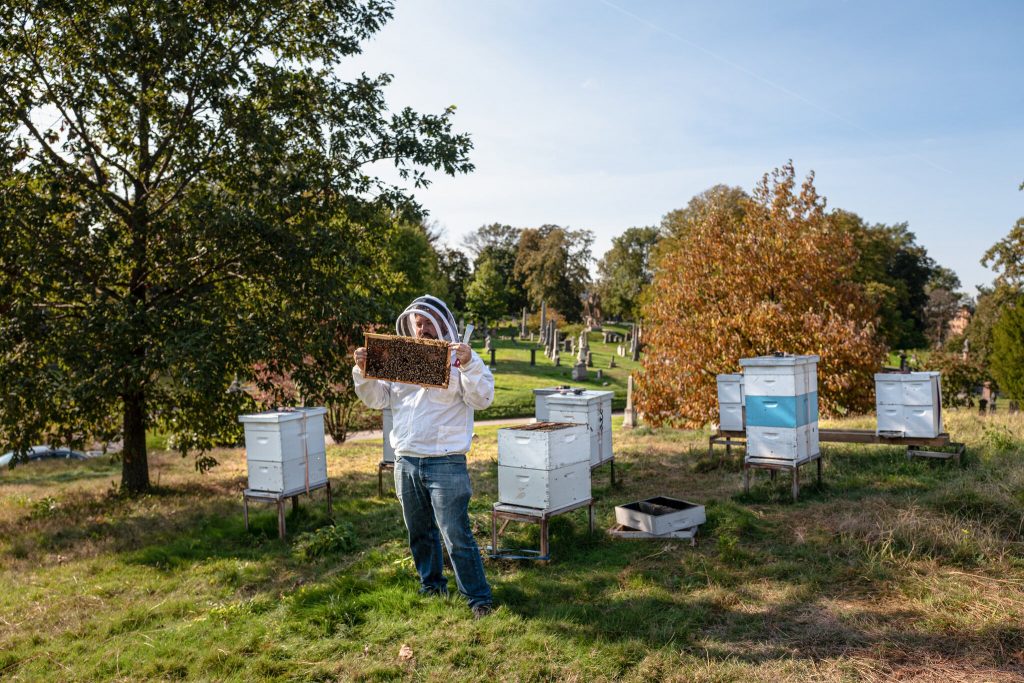
There are dozens of bee boxes at Green-Wood Cemetery in Brooklyn, New York and each one is home to up to 60,000 bees.
And even though the objective for beekeeping at the cemetery is to produce more bees, there is still “money in the honey”.
Each year, Green-Wood Cemetery beekeepers harvest hundreds of pounds of honey.
Visitors can buy a jar of the liquid gold from a wheeled cart outside the cemetery’s gothic main gate. Or they can sponsor half a hive for $250 or a full hive for $500 annually.
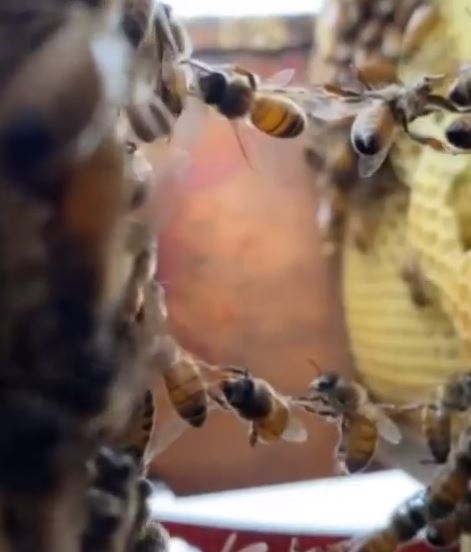
Green-Wood Cemetery’s honey bees “festoon” during the summer. Festooning is when the bees join together in a leg-to-leg connection, hanging together in a chain to keep cool.
In the winter, they cluster together in a “group hug” to produce heat.
Animals at the Cemetery: Squirrels
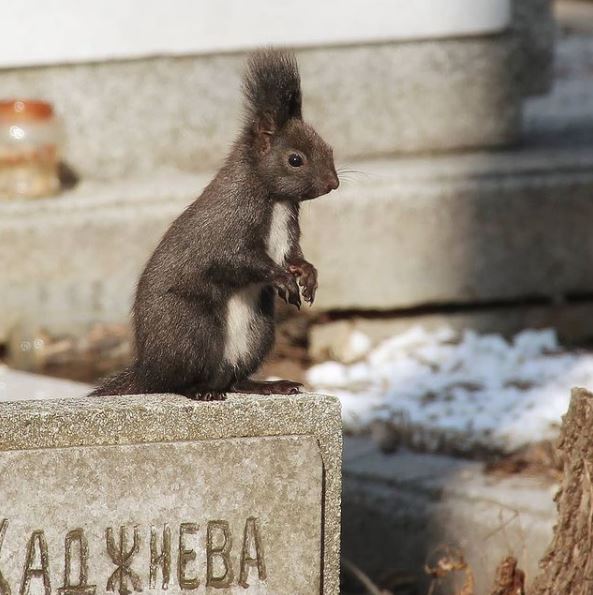
This squirrel at a cemetery in Sofia, Bulgaria has a punk hairstyle going on!

He must have started a fad. This squirrel from a cemetery in Berlin is going for the same look.
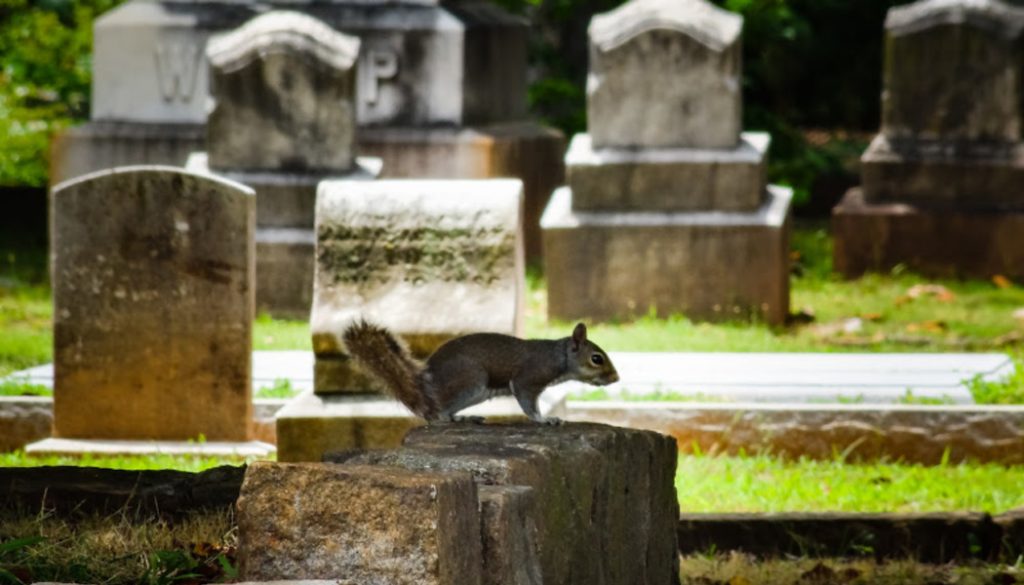
Do you think this cemetery squirrel is looking for a particular grave? If YOU would like to find a particular gravestone at the cemetery, click HERE to learn how.
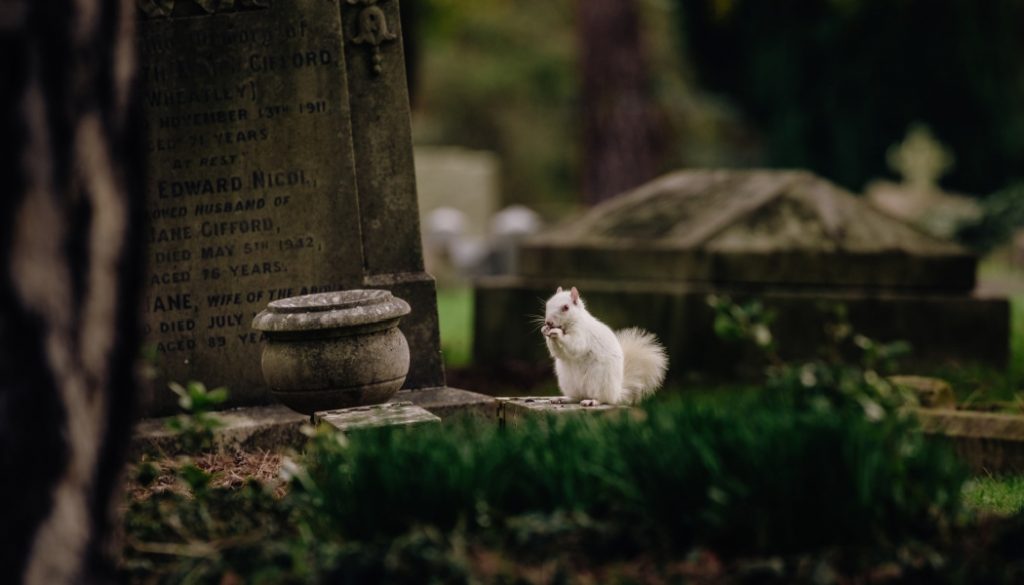
Albino squirrels are white with pink or red eyes. Their unique eye color is a result of a lack of melanin pigments that produce eye and coat color.
Albino animals of all types are quite rare. The odds of seeing an albino squirrel is just one in 10,000. The odds of seeing an albino squirrel in a cemetery are . . . well, you figure it out! It’s pretty amazing!
Animals at the Cemetery: Deer
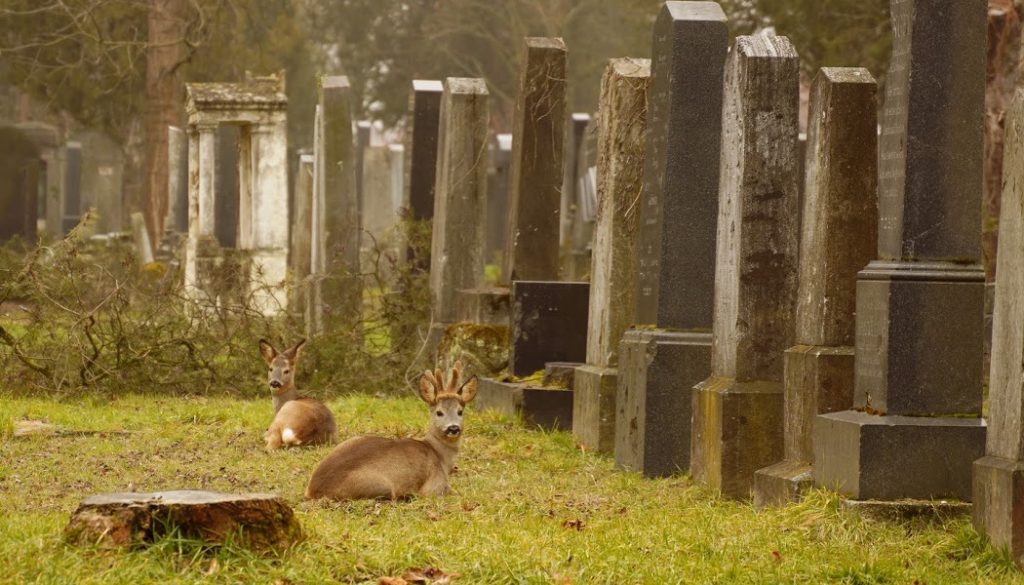
These deer feel safe bedding down among the gravestones at a cemetery in Vienna, Austria.
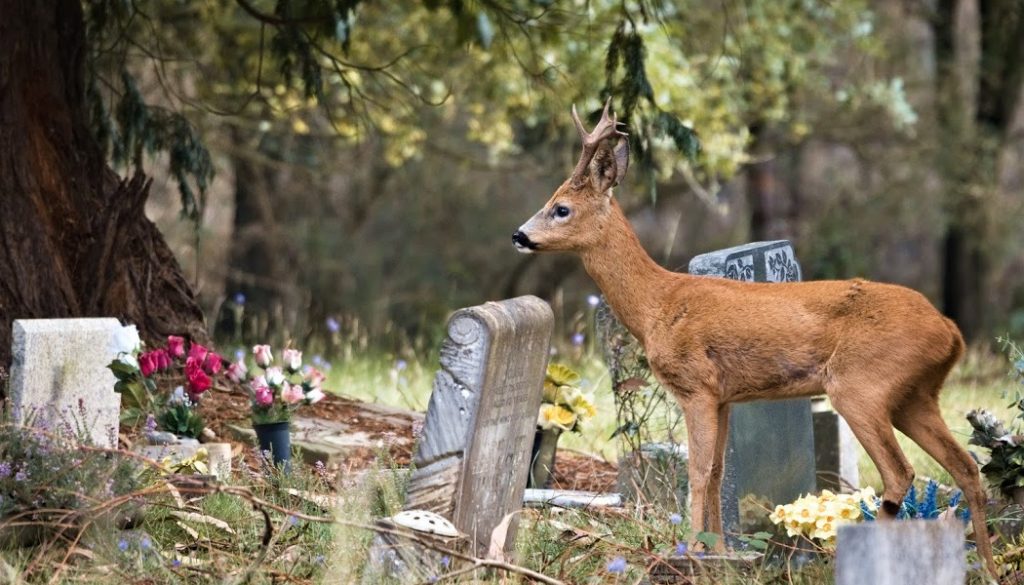
A roe deer buck wanders in Brookwood Cemetery in Brookwood, Surrey, England.
Brookwood Cemetery is the largest cemetery in the United Kingdom and one of the largest in Europe.
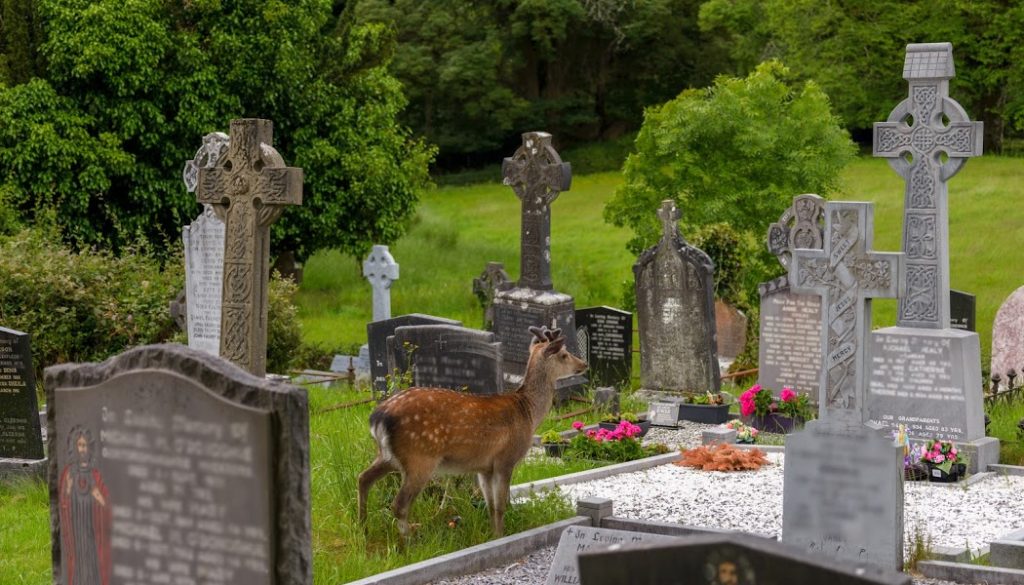
You will be more likely to see animals at an older cemetery than a new one. That is because there are typically fewer visitors at an older cemetery.
People tend to visit the graves of their parents, or even grandparents, a few times a year but not too many people visit the graves of their great-great-grandparents repeatedly.
So if want to spot some deer at a cemetery, sneak over to the older sections!
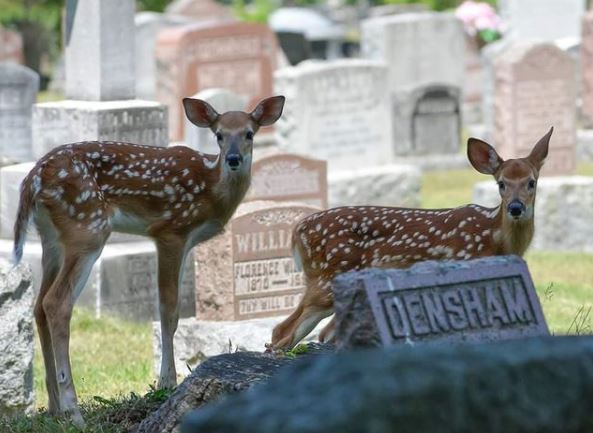
Cemetery fawn are usually curious, but not shy. They have plenty of new territory to explore and gravestones to check out in the cemetery in complete safety.
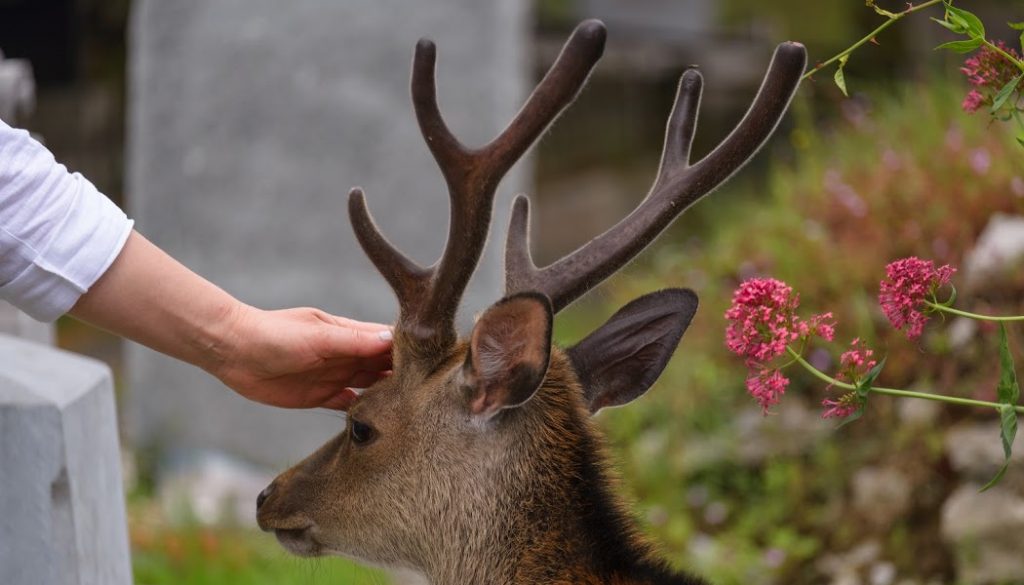
This buck at the Irish Graveyard of Muckross Abbey in Killarney National Park, near the town of Killarney, County Kerry, Ireland has become so tame that he lets visitors pet him.
Animals at the Cemetery: Fox
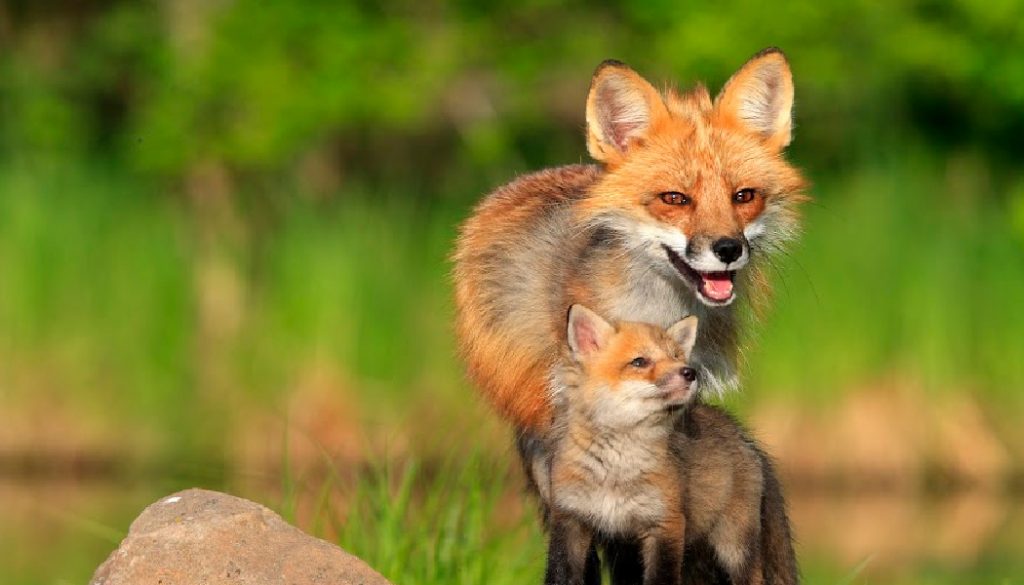
Fox babies — called “kits” — are born in the spring. A typical litter consists of five kits, each one about the weight and size of a lump of charcoal.
The kits stay in their den for four or five weeks before they venture out to explore the world around them.
By the second month, they’re fully weaned but parents and offspring stay together as a family until late autumn. Then the young ones strike out on their own to find dens for the winter.
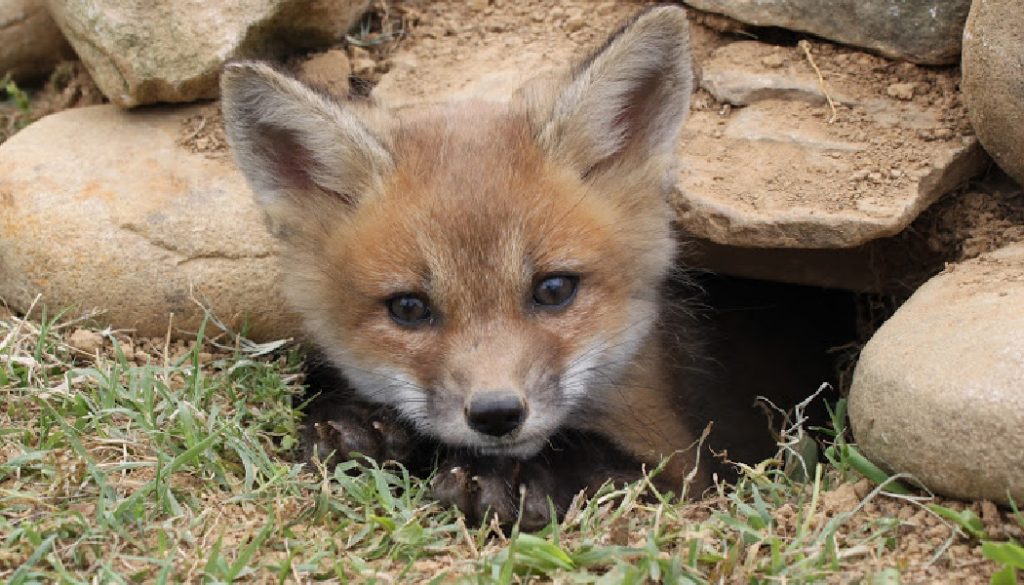
Burrows dug underneath gravestones make safe dens for a litter of kits.
With five kits per litter each year and few predators, the population of foxes can grow rapidly in a cemetery.
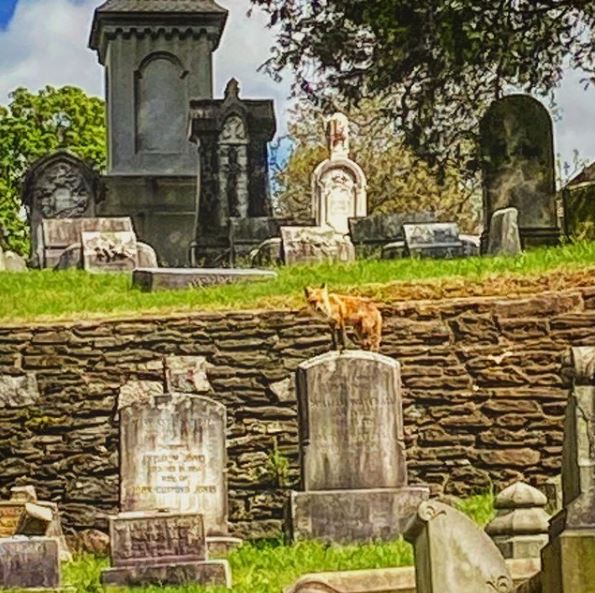
This fox has made its home at Laurel Hill Cemetery in Philadelphia, Pennsylvania.
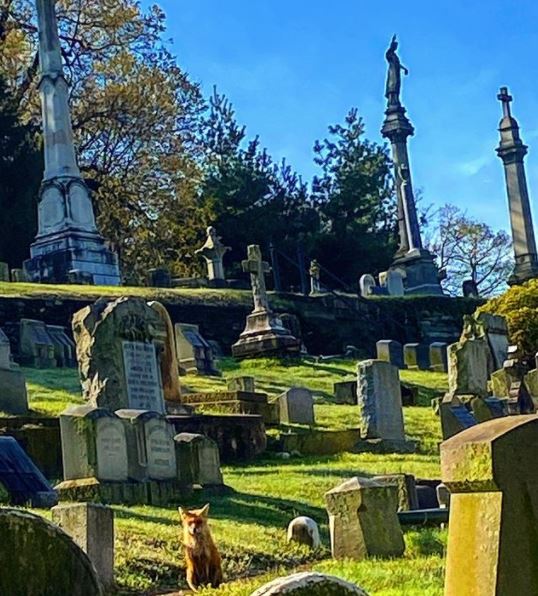
The foxes that live at Laurel Hill Cemetery have become so tame that they have been known to follow visitors around.
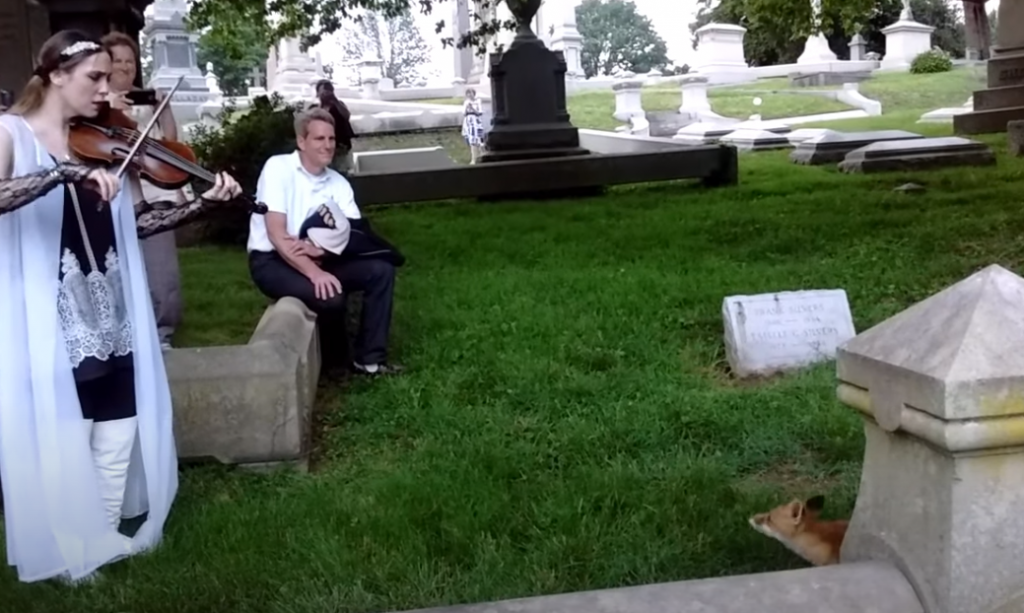
This fox even ventured out of its den to listen to a public violin performance being held at Laurel Hill Cemetery.
You can watch the fox lingering to hear the music by clicking HERE.
Animals at the Cemetery: Groundhogs
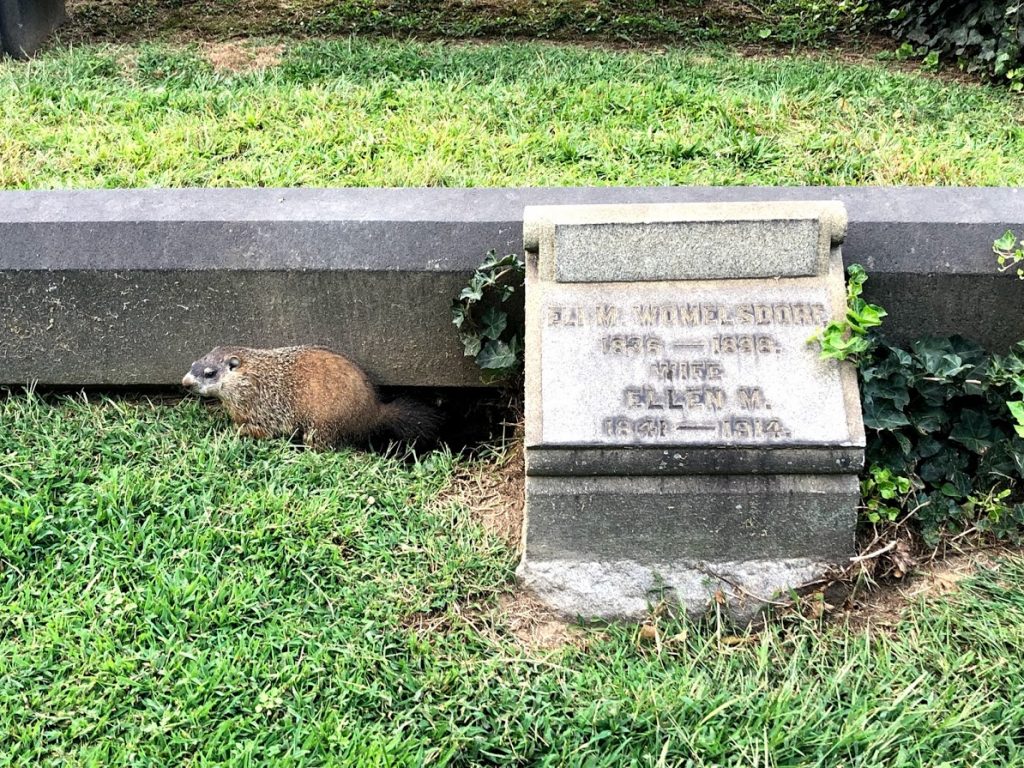
Groundhogs dart in and out of holes in the ground at Woodlands Cemetery in Philadelphia.
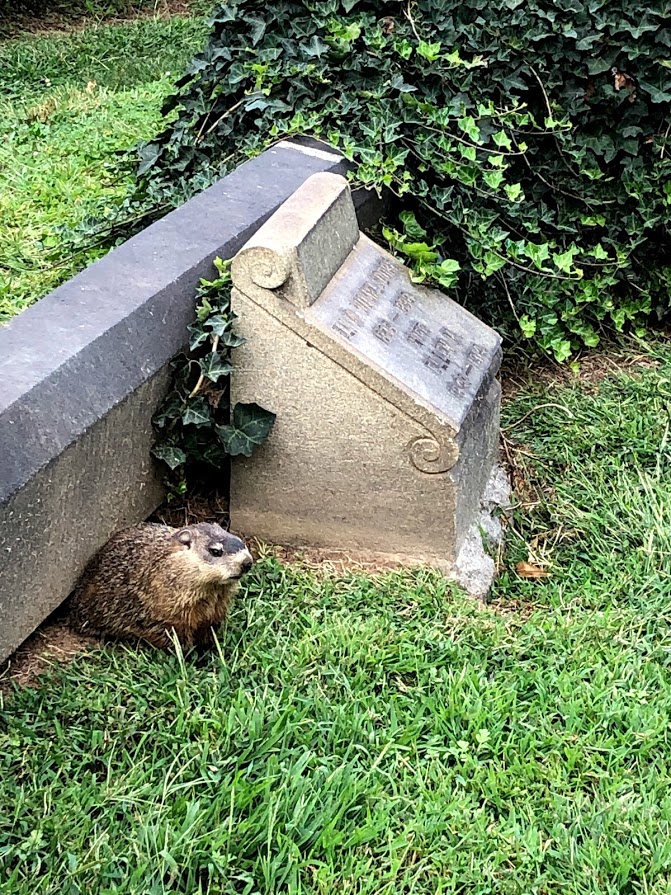
The elaborate tunnels that groundhogs dig often cause gravestones to sink, so they are considered a nuisance by the groundskeepers.
But they sure do make cute pictures for cemetery visitors!
Animals at the Cemetery: Kangaroo
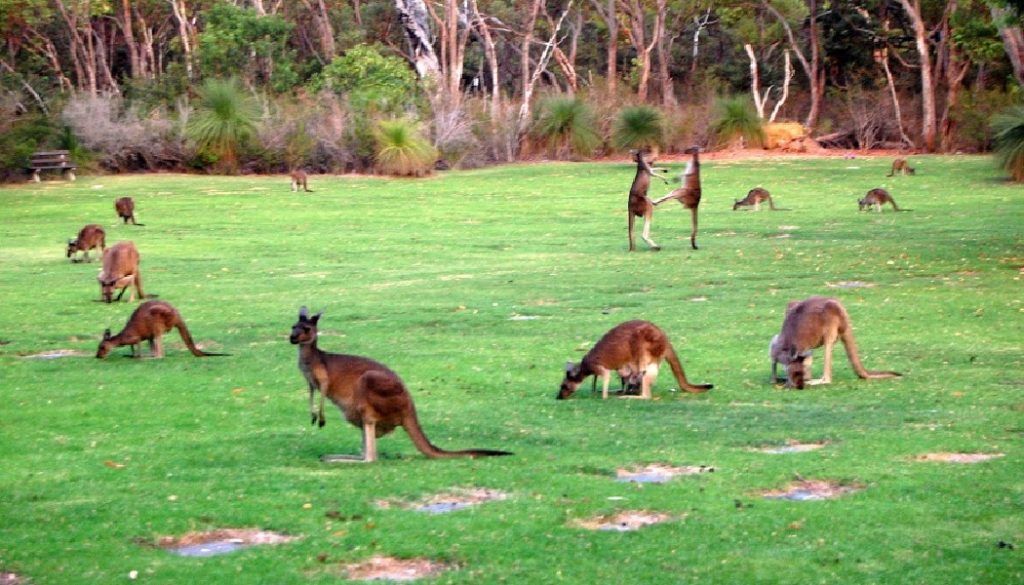
These fighting kangaroos in a cemetery in Perth, Western Australia bring a whole new meaning to “cemetery hopping“!
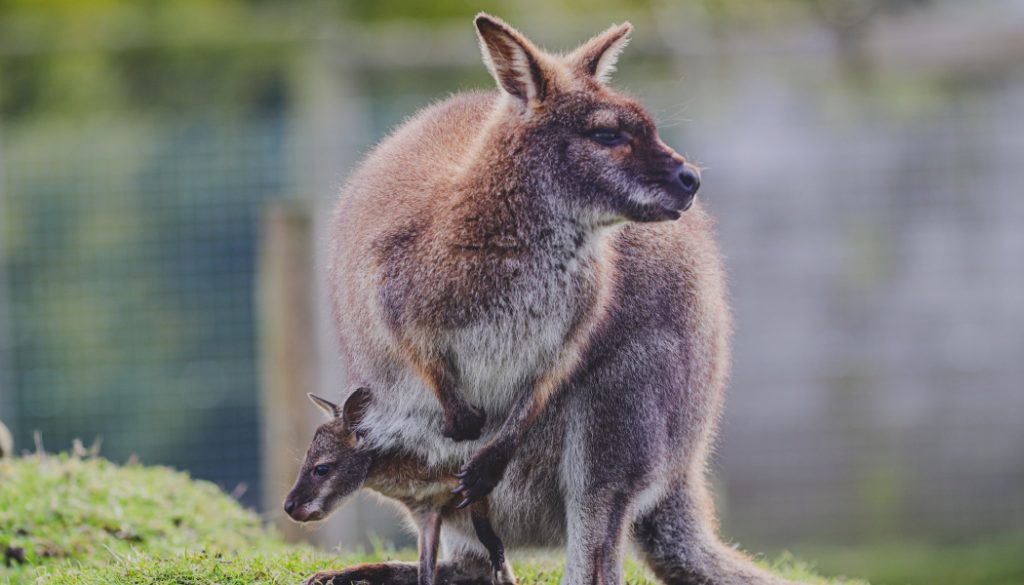
A kangaroo mother will often have three offspring with her at a time – one in embryo since she is nearly always pregnant, one joey in her pouch, and one young kangaroo that has not struck out on its own yet.
This makes for lots of cemetery kangaroos!
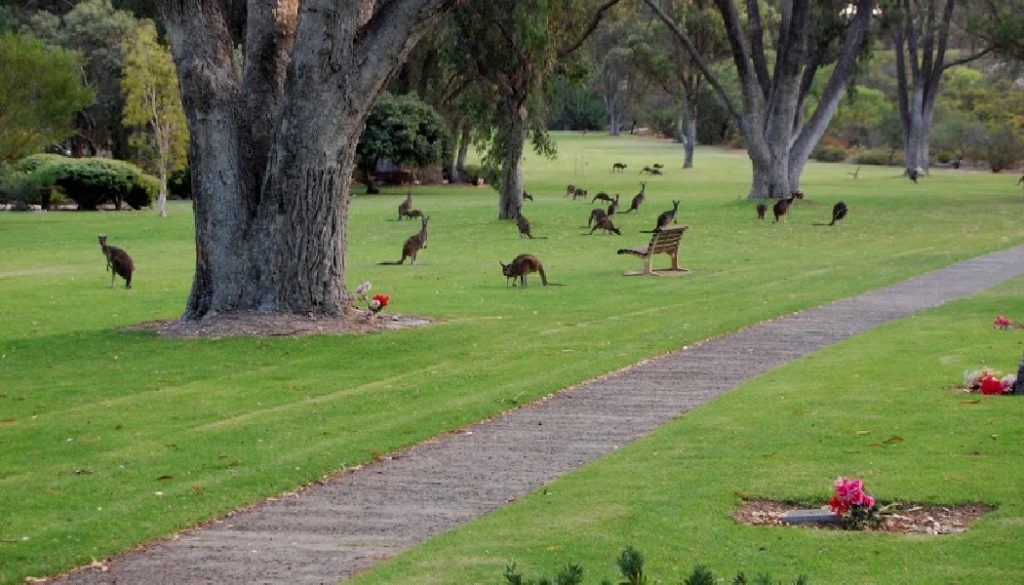
Australia has a population of about 25 million people and an estimated 50 million kangaroos, which some Aussies call “plague proportions.”
But tourists love them and often visit Australian cemeteries because they know it is an easy place to take photos of kangaroos.
If you are interested in Australian gravestone symbols, click HERE to learn more.
Animals at the Cemetery: Mice
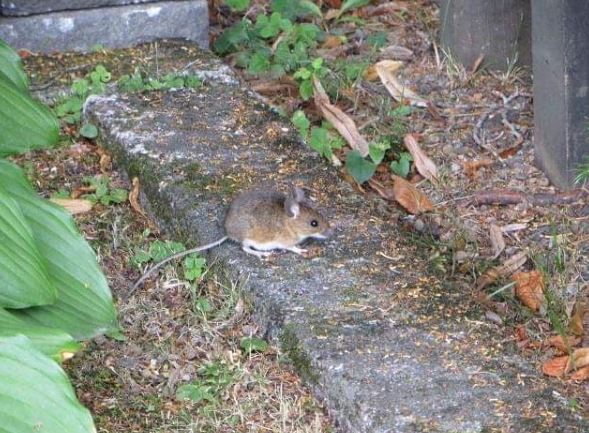
“Grave hunter”, “graver”, “cemetery tourist” or “taphophile” are terms that describe an individual who has a passion for and enjoyment of cemeteries.
So what do you call a mouse that likes to hang out among the gravestones? A cemetery rat?
It’s not a city mouse or a country mouse. It’s a cemetery mouse!
Animals at the Cemetery: Rabbits
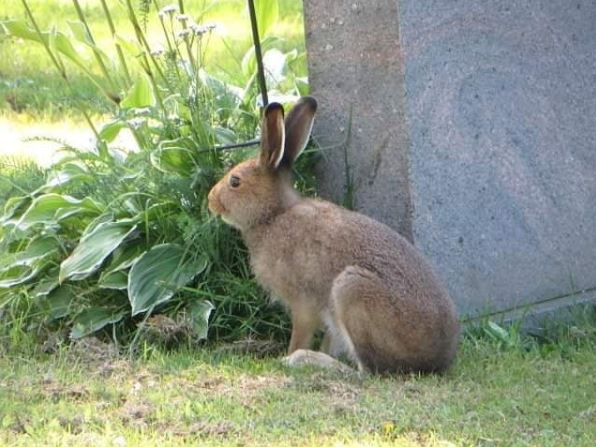
This cute little guy has moved in at Mäntyharjun uusi hautausmaa, the new cemetery in Mäntyharju, Finland.
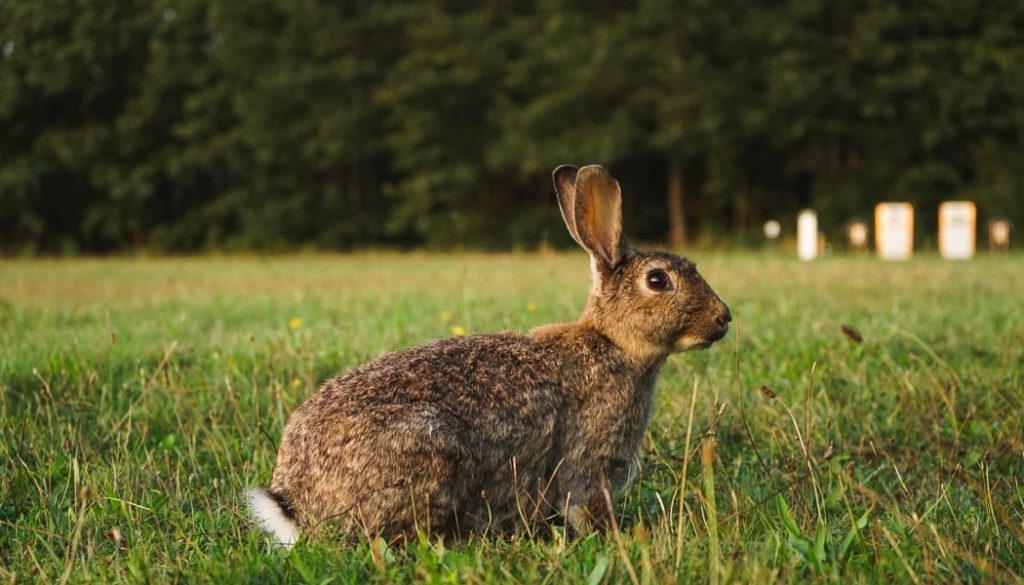
Rabbits can reproduce at a rate of four litters per year with as many as five offspring in each. Yup, up to twenty bunnies per mama, per year! That’s a lot of cemetery rabbits!
Animals at the Cemetery: Coyote
Coyotes often frequent cemeteries in search of the rabbits, mice, and deer who showed up for the grass.
This coyote is in Concordia Cemetery, Forest Park, Chicago, Illinois letting a passing dog know that this is his territory.
Animals at the Cemetery: Racoons
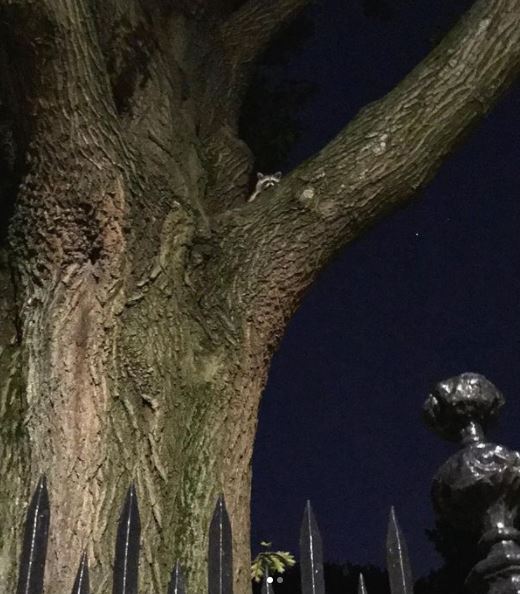
Nighttime is when most cemetery wildlife comes alive. This raccoon is watching over the gravestones from above.
Protecting Cemetery Wildlife
Some cemetery managers are mindful that cemeteries have become places of refuge for wildlife – especially wildlife in big cities. So many of them are leaving the older parts of cemeteries, where people don’t visit much anymore, a bit more unkempt.
They may mow a path between the rows, but let the flora come through in other areas. This will attract insects. And that is the beginning of a whole food chain right in the cemetery.
Cemeteries are where nature meets city, life meets death, and past meets present.
Click HERE to see one cemetery animal that won’t run away!
Taking Photos of Gravestones
If you are visiting a cemetery to check out the wildlife or to seek out your ancestors, we would love to have you take photos of gravestones while you are there. It will help others expand their family tree.

Here’s how you can get started:
- Download the BillionGraves app to your smartphone from your app store.
- Create a free account on the app or at BillionGraves.com.
- Click HERE to find a cemetery that still needs to have photos taken.
- The dots on the map indicate where GPS-linked photos have already been taken. If there are areas with gravestones that have no orange dots, then your service is needed to photograph that section of the cemetery.
- Open the BillionGraves app as soon as you arrive at the cemetery since the GPS feature will work best if the app has about 5 minutes to connect before you begin taking photos, especially if you are taking photos in a remote area.
- At the cemetery, check the bottom of your screen to see if the name of the cemetery matches your current location. If the wrong cemetery name is listed, tap on it, and then select the correct cemetery name.
- From the main screen of the app, click on “take pictures” to begin taking photos in your local cemetery. The GPS coordinates will be recorded automatically.
- Go up and down the rows, taking pictures of each gravestone until you have completed an entire section or the entire cemetery. Keep moving at a quick pace. If you take 1 photo every 15 seconds you will have taken almost 250 photos in an hour!
- If you are working with another person, leap-frog over each other’s rows until you have completed a section.
- When you are finished, connect to Wi-Fi and tap on the “X” in the corner of your screen.
- When the orange button that says “upload” appears, tap on it to submit your gravestone photos.
Repeat! 🙂
You are welcome to take photos of gravestones at your own convenience, no permission from us is needed. If you still have questions or concerns after you have checked out the resources above, you can email us at Volunteer@BillionGraves.com.
Would you like to lead a group in documenting a cemetery? Send an email to Volunteer@billiongraves.com and we’ll be happy to send you some great tips!
Happy Cemetery Hopping!
Cathy Wallace



